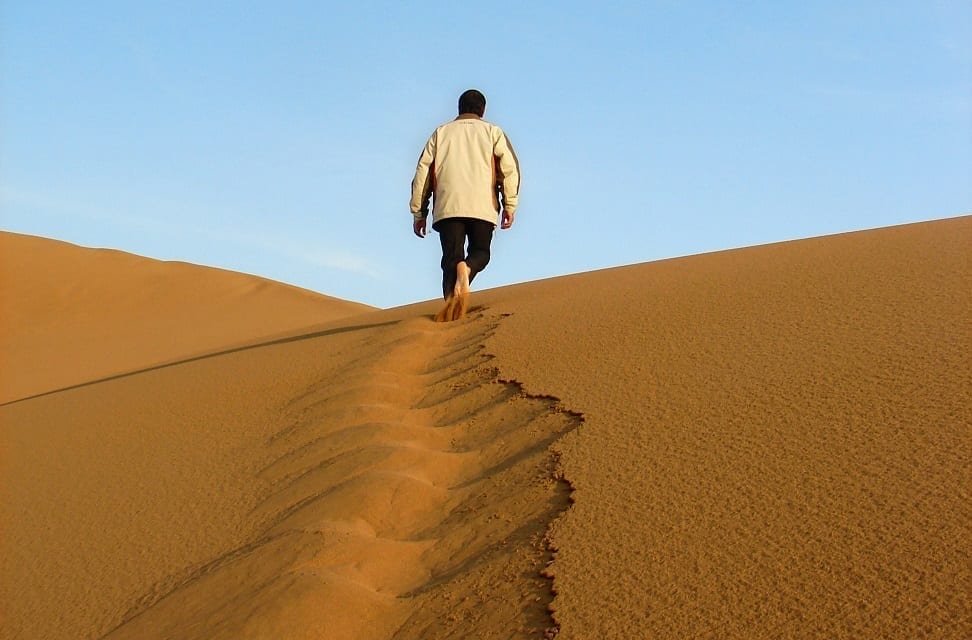Since Earth Day is tomorrow, it’s worth considering a couple old, bold examples of what humans can do right – and wrong. Surprisingly, two of the most contrary landscapes on the face of the planet may both have been created by people. What can we learn from the stark difference between the Sahara and the Amazon?
As the environment has become an increasingly important topic in public discourse over the last couple generations, the two major sides have crystallized their arguments in some less-than-helpful ways. On one side, we have the pro-corporate or “I don’t want to deal with it, I’ll be dead when it matters” climate deniers, who do their level best to sow doubt and confusion in the service of laziness and profit. On the other side, there are hand-wringing environmentalists who assure us that all is already lost. If people, simply by existing, exact a fatal toll on the planet and nothing we do can change that, the logical endpoint of that train of thought is that we should all just off ourselves. I don’t know about you, but I’m unwilling to go there. What this conclusion ignores is that humans can help the environment.
Since Earth Day is tomorrow, it’s worth considering a couple old, bold examples of what humans can do right – and wrong. Surprisingly, two of the most contrary landscapes on the face of the planet may both have been created by people. What can we learn from the stark difference between the Sahara and the Amazon?
New research suggests that people had a hand in drying the Sahara. Long ago, the Sahara was a lush region populated with plants and animals – and us. Ancient rock art among the sands depicts long absent animals like elephants, giraffes, and crocodiles. People thrived there too, eating 300-pound Nile perch that lived in the vast Saharan lakes. So, what happened? About 8,200 years ago, the Sahara began a long transition from paradise to parched desert. Ecosystems are complex; there may be many causes, including changes in the Earth’s orbit, but an increase in pastoralism also brought with it the scrubby desert vegetation that is familiar in the region today. As more people herded more animals that ate more plants, more sunlight reflected from the lighter surface, creating warmer atmospheric conditions that affected monsoon patterns. And as people and their animals stripped the area bare, the more people had to rely on those very animals for their living. The cycle perpetuates itself.

Across the globe in the Amazon, the influence of humanity is also visible. Recent tree studies heavily suggest that this is not the untouched, pristine wilderness we’ve been taught. Rather, the high relative number of tree species that are useful to people, such as cacao, rubber, acaí, and Brazil nut, imply that pre-Colombian people were tending the Amazon as a large forest garden, tailored to their needs and tastes. Eighty-five domesticated tree species, and even more wild varieties that were managed for their useful qualities, still dominate large areas of the forest. After European contact spread new diseases which killed many of the native forest dwellers, the trees quickly spread, pulling carbon out of the air, likely contributing to the Little Ice Age, from about 1350 to 1850. Thus, it appeared to be “untouched wilderness” by the time Europeans wandered in.
Humans can help the environment if we learn from examples like these. Everything we do has an effect, but to combat such a global change in climate, we would have to make monumental changes in our daily lives. Are we willing to do so? It depends upon whether or not we think continuing to live is important enough to work for. After all, the rock we’re standing on will still exist with or without us, and some life will go on despite our best efforts at causing (or incompetent stumbling into) a global extinction event. If you were with me in the first paragraph – the part about not wanting to off ourselves – then we should act like it. Indulging in fatalism is taking the easy way out, and here as elsewhere in life, we often get the outcome we earn.
Tomorrow, let’s consider the road ahead of us and decide what we want for our children, and what we would have wanted our ancestors to pass down to us. We can be better. If we are our best moral selves, humans can help the environment. Happy Earth Day from all of us here at Legal Reader.
Related: The Anthropocene: A Real Time Closeup


Join the conversation!